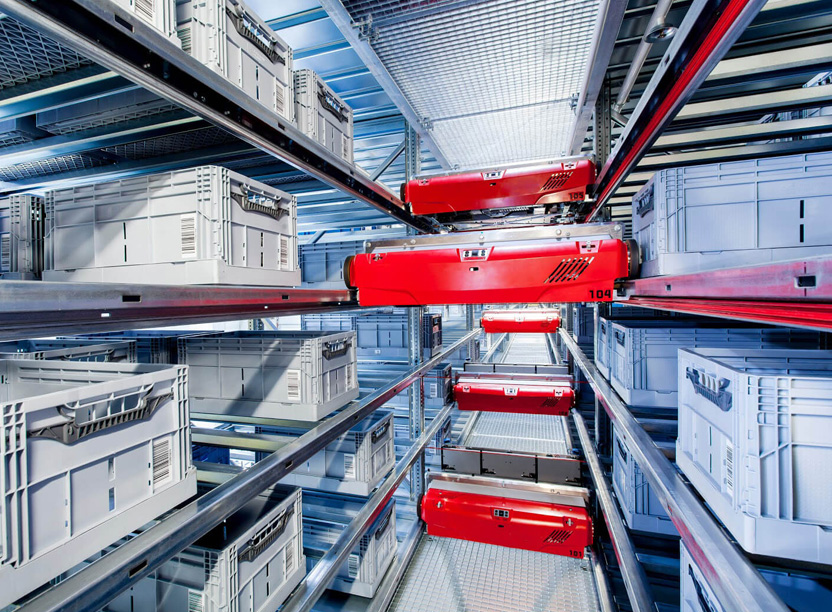Developing a capacity planning process that works can be a challenging task for any business. Capacity planning is the process of determining the resources required to meet demand and ensuring that those resources are available at the right time. Developing an effective capacity planning process is essential for businesses looking to maximize efficiency and profitability. In this blog, we will discuss how to develop a capacity planning process that works for your business, and how AWL can help.
Process Of Developing A Capacity Planning Process
Step 1: Understand Your Demand
The first step in developing a capacity planning process that works is to understand your demand. To do this, businesses need to identify their demand patterns and forecast future demand accurately. Understanding demand patterns is essential to determine the capacity needed to meet demand at any given time. One way to understand demand patterns is to analyze historical sales data. By reviewing past sales data, businesses can identify patterns in sales volume and the times of the year when sales are higher or lower. This information can help businesses to forecast future demand and plan their capacity accordingly. Another way to understand demand is by conducting market research. By studying market trends and consumer behavior, businesses can gain insights into their customers' preferences and anticipate future demand.
Conducting surveys, focus groups, and analyzing social media can help businesses understand what drives consumer behavior and preferences, which can help them plan their capacity to meet future demand. It is also important to consider external factors that can impact demand, such as economic trends, seasonal changes, and emerging technologies. These factors can have a significant impact on consumer behavior and demand patterns, and businesses need to take them into account when developing their capacity planning process. Once a business understands their demand patterns, they can move on to the next step in developing effective capacity planning strategies.
Step 2: Identify Your Capacity Constraints
Identifying your capacity constraints is an important step in developing a capacity planning process that works. Capacity constraints can come in many forms, such as physical space limitations, equipment availability, or staffing limitations. Without identifying these constraints, it can be challenging to accurately plan for future capacity needs. One way to identify capacity constraints is to conduct a capacity audit. A capacity audit involves evaluating your existing resources, such as warehouse space, equipment, and staffing, to determine their current capacity levels. This evaluation can help you identify any areas where your current capacity is maxed out or where there is room for growth. Another approach to identifying capacity constraints is to conduct a bottleneck analysis. A bottleneck is any process or resource that limits the overall capacity of your operation.
By identifying bottlenecks, you can focus on addressing the root cause of the constraint and finding ways to increase capacity in that area. Once you have identified your capacity constraints, it's important to document them and monitor them regularly. By tracking your capacity constraints over time, you can better anticipate future capacity needs and proactively address any potential issues before they become a problem. In summary, identifying your capacity constraints is a crucial step in developing an effective capacity planning process. Conducting a capacity audit or bottleneck analysis can help you understand your current capacity levels and identify areas for improvement. Documenting and monitoring your capacity constraints will help you proactively plan for future capacity needs and ensure that you are prepared to meet the demands of your business.

Step 3: Develop A Capacity Plan
Developing a capacity plan is critical to ensuring that your business can meet demand in a timely and efficient manner. A capacity plan takes into account the demand forecast, capacity constraints, and resource availability to create a clear roadmap for resource allocation. This plan helps businesses determine the necessary resources, such as labor, equipment, space, and inventory levels, to meet demand and ensure customer satisfaction. AWL has the expertise and experience to help businesses develop a capacity plan that is tailored to their specific needs. With our cold storage supply chain management knowledge and resources, we can identify the resources required to meet demand and create an effective allocation plan. We work closely with businesses to understand their unique requirements and constraints, and then we use our tools and expertise to develop a capacity plan that is both efficient and effective.
One of the key benefits of working with AWL to develop a capacity plan is our ability to provide data-driven insights. We use sophisticated data analysis tools to identify patterns and trends in demand and capacity data. By analyzing historical data, we can identify capacity constraints and develop strategies to overcome them. We can also use forecasting tools to project future demand and identify potential capacity issues before they become problems.
In addition, AWL can help businesses develop contingency plans to mitigate risk and ensure continuity of operations. Our team of experts can develop alternative scenarios for unexpected events, such as supply chain disruptions or natural disasters. By having a contingency plan in place, businesses can minimize the impact of unforeseen events on their operations and maintain customer satisfaction. Overall, developing a capacity plan is a critical step in ensuring that businesses can meet customer demand and achieve their operational goals. With AWL's expertise and resources, businesses can develop an effective capacity plan that optimizes their resources and minimizes risk.
Step 4: Implement and monitor the plan
Implementing and monitoring the capacity planning process is a critical step towards achieving operational efficiency and maximizing profitability. Once the capacity plan has been developed, it is important to put it into action and ensure that it is working effectively. This involves executing the plan and monitoring its performance over time to identify areas for improvement and make necessary adjustments. AWL can provide the necessary support to help businesses implement and monitor their capacity planning process. With our advanced supply chain management tools and expertise, we can help businesses optimize their operations to maximize efficiency and profitability. Our team can assist businesses in identifying the key performance indicators (KPIs) to measure the effectiveness of their capacity plan, and monitor these KPIs regularly to ensure that the plan is on track.
In addition, AWL can provide ongoing support to help businesses identify and address any issues that may arise during the implementation of the capacity plan. Our team can provide recommendations for process improvements, and help businesses identify areas where additional resources or adjustments may be needed. Furthermore, AWL can provide training and education to ensure that the capacity planning process is fully integrated into the business and that everyone involved understands their role in the process. This can help ensure that the capacity plan is executed consistently and effectively across the organization. Overall, implementing and monitoring the capacity planning process is an important step towards achieving operational efficiency and maximizing profitability. AWL can provide the necessary support and expertise to help businesses develop and execute a capacity plan that is tailored to their specific needs, and monitor the plan to ensure that it is working effectively.
Conclusion
In conclusion, developing an effective capacity planning process is essential for businesses looking to maximize efficiency and profitability. By understanding your demand, identifying your capacity constraints, developing a capacity plan, and implementing and monitoring the plan, you can ensure that you have the resources necessary to meet demand at all times. AWL India is one of the leading 3PL companies in India which can help you develop a capacity planning process that works for your business. With our expertise in supply chain management and advanced tools, we can help you optimize your operations and improve your bottom line.

Lovely Mehra
Corporate Communications Specialist




